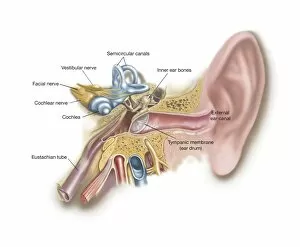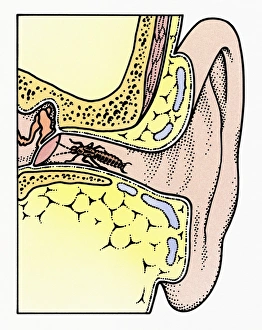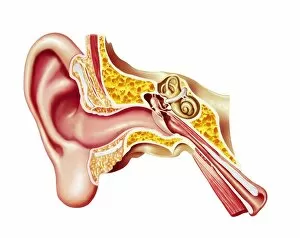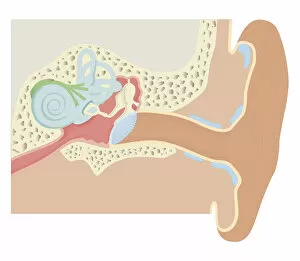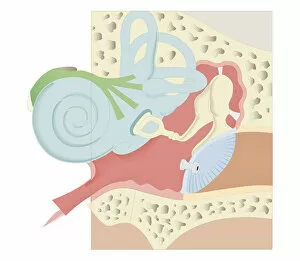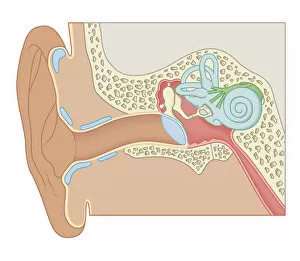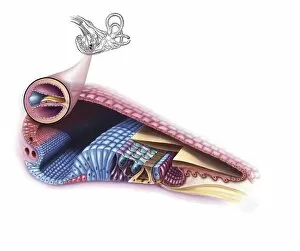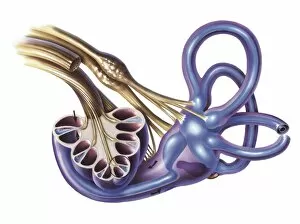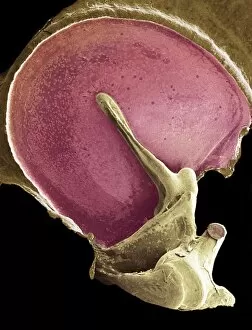Tympanic Membrane Collection
The tympanic membrane, also known as the eardrum, is a vital component of the human ear
All Professionally Made to Order for Quick Shipping
The tympanic membrane, also known as the eardrum, is a vital component of the human ear. Located at the end of the external auditory canal, it serves as a barrier between the outer and middle ear. This thin, translucent structure plays a crucial role in transmitting sound waves from the environment to the inner ear. In an intricate cross-section illustration of the common earwig (Forficula auricularia), we can observe its antennae delicately touching the tympanic membrane within the auditory canal. This interaction highlights how insects utilize their sensory organs to perceive sounds in their surroundings. Understanding the anatomy of our ears is essential for comprehending how they function. The cochlear duct, situated within this complex system, forms part of our inner ear and sinuses. A cutaway diagram provides insight into these internal components and their interconnectedness. Biomedical illustrations further demonstrate various aspects related to this fascinating organ. One such depiction showcases a grommet inserted into an eardrum affected by certain conditions or medical interventions. Another cross-sectional view emphasizes both external and internal structures present in our ears. Studying these biomedical illustrations aids researchers and healthcare professionals in diagnosing and treating disorders that affect hearing or balance. By unraveling intricacies like those found within tympanic membranes, scientists continue advancing knowledge about our remarkable auditory system.



